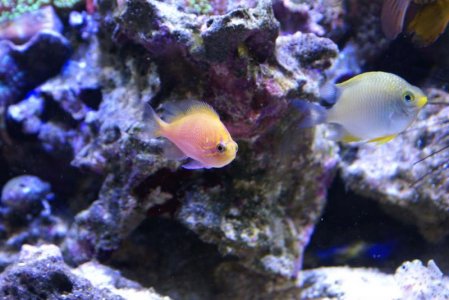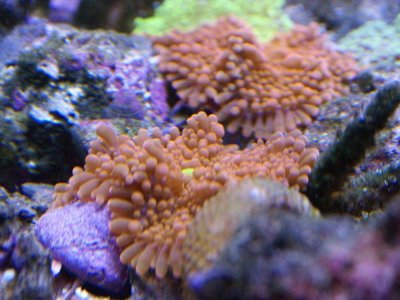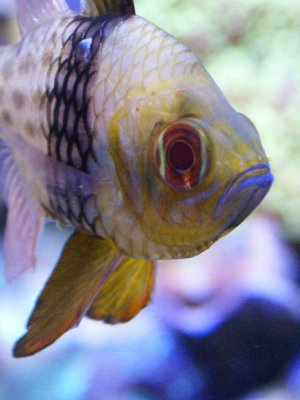mr.wilson
.Registered Member
I disagree with the "large glass dome" comment. Since it isn't focusing the light specifically like a 90 or 60 degree optic would, it is essentially doing the same thing a led with a "plastic" dome would do with the led angle, nothing. I've never had a "purple or yellow shadow" with my setup either.
It is tough to avoid a blue/white shimmer using optics however. With that said, hanging a multichip higher over an open tank without focusing the light will end up shooting a lot of that light all over the room instead of the tank itself. The led angle is still 110-120 degrees, and hanging that 10" or more over the water will light everything in the room.
I'm comparing a 90˚ or 120˚ dome lens for a multichip to a 90˚ or 120˚ lens for a 1-3w chip. With the latter, you get a hot spot in the centre, and with the former the spread is fairly even over 3'. With a 120˚ dome lens I get double the PAR, and with 90˚ I get four times the PAR of no lens. The dome lens has a lot of glass and craftsmanship, while the small plastic optics have limited ability to spread light evenly or concentrate it. It's like comparing an Iphone lens to an SLR lens. Small optics are cheap commodities designed to cost only pennies. Glass dome lenses would be better for our purpose, but they would cost hundreds of dollars to fit over each chip.
I agree with using a multicolor multichip, but unless that multichip can also include warmer whites or actinic violet in it, it is much less flexible and less visually appealing. I've run a Cool White/Royal Blue 1:1 only fixture for a few months, and several colors end up lacking in fluorescence. Many coral pieces become dull and lifeless looking. After introducing warmer whites along with CWs and 2:1 royal blue, violets, reds, and some green, my coral have never looked better.
I use 14k white, 465nm royal blue, 480nm blue, 420nm UV, and 660nm red in a three colour channel multichip run at 185w. Channel 1 = white, channel 2 = blue, royal blue, and UV, and channel 3 = red. The red is dimmed down to almost nothing and I use another multichip that uses a lot more UV and no red.
Nutrients grow cyano. My lights do not and have not. When said nutrients appear in the tank, the lights will probably grow the cyano too.
Cyano and candy floss algae grows in refugiums where I use Cree LED fixtures and plasma lights, while it never grows in the display tank. Flow could be a contributing factor. When I switch to a bluer LED, the cyano goes away and PAR is much higher.
Chinese "High Kelvin" leds also differ vastly from bins they have. One 3w "14k" led that was supposedly the same as another company's 3w "14k" led was half as bright and completely different in color. Using Crees from WW 3.5k to CW does look yellow on their own, which is why the blues are needed.
Again, the blues you need to drown out the yellow/green have a much lower lumen/watt rating so efficiency falls off. You need to measure the efficiency of the whole fixture and not just focus on the 25% Cree white numbers.
According to you, my tank should look like urine. Does this look yellow to you? I would challenge any multichip against this, and I have full Apex control of the color for each separate channel.
It's hard to tell from the picture, but if you are using 420nm, 450-465nm, 480nm, and 660nm, a low kelvin white isn't the end of the world. I group the blue, royal blue and UV on one channel, but they are so close that they don't need separation.








